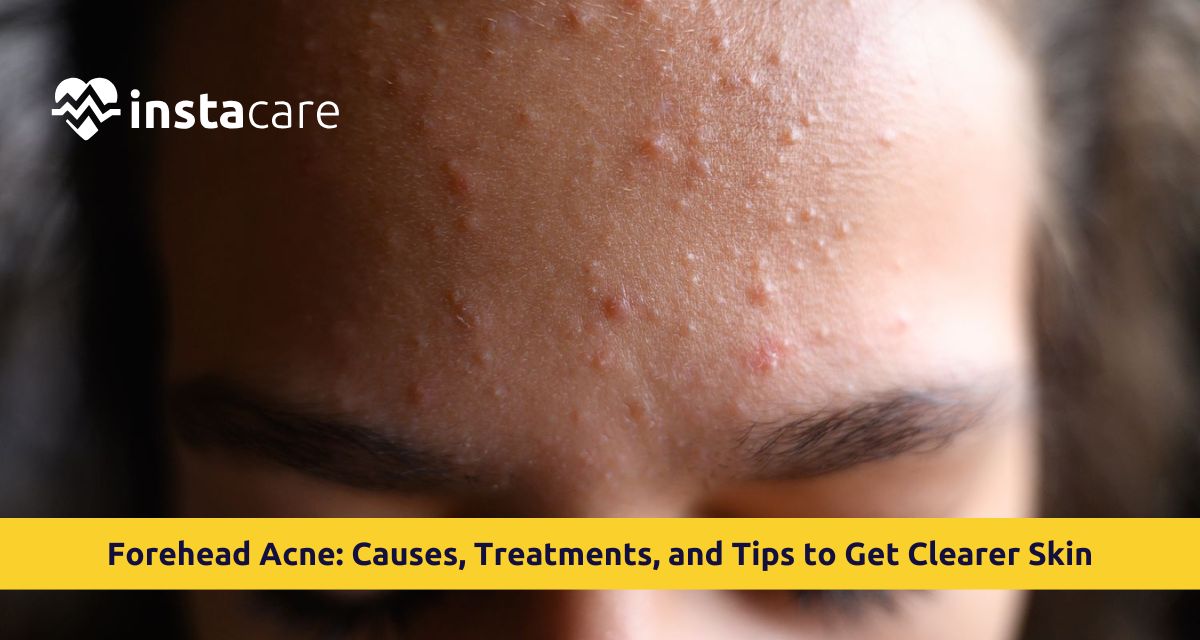Understanding Forehead Acne
Forehead acne takes the shape of whiteheads, blackheads, papules, or pustules on the forehead. Forehead T-zone is the sebum over-producer in relation to the rest of the face. Additional oil, including dead skin cells and bacteria, is the ideal breeding ground for creating acne. Forehead acne meaning is generally all concerning some of its causes hormones to hair products. It does make a difference if you have normal acne or if you have fungal acne because their treatments are quite different.
Major Causes of Forehead Acne
Hormonal Imbalance
Hormonal imbalance is most common in women's forehead acne. Menstruation, pregnancy, or menopause triggers shifting hormones to develop excess sebum that blocks pores. No wonder, forehead acne causes in females best guesstimate monthly cycles.
Hair and Skincare Products
Your hair care regimen is probably to blame. Shampoo and conditioners with added oil, rich conditioners, and hair styling gels are transferred to your brow line and clog pores. Even moisturizers have comedogenic ingredients that lead to acne.
Dermatological Neglect
Popping your face, sleeping in makeup, or grimy hats provides bacteria with a breeding ground to stay. Sweating on warm weather or post-exercise also carries dirt to block pores.
Diet and Lifestyle
Diet and forehead acne go hand in hand. Milk, glycemic food, and processed sugar drive insulin off the charts, increasing inflammation and over-secretion of oil. Stress also increases cortisol, another break-out cause.
Fungal Acne vs Normal Acne
Forehead acne vs fungal acne is an important distinction. Fungal acne is even, itchy pimples resulting from excessive yeast growth, whereas normal acne is not even in shape and is not usually itchy. Untreated can be triggered by improper diagnosis.
Effective Treatment Options
Topical Treatments
To get rid of forehead acne starts with a good topical. Salicylic acid penetrates the pores and dissolves debris, and benzoyl peroxide kills bacteria that cause acne. Retinoids cause cell turnover and open up pores. Start low to avoid irritation of the skin.
Best Products
Look for non-comedogenic cleansers containing salicylic acid or glycolic acid. Light oil-free moisturizers hydrate the skin but won't block pores. Niacinamide serums regulate redness and regulate sebum. Benzoyl peroxide spot treatments are effective on active acne using the best products for forehead acne.
Read More: Does Lack Of Sleep Cause Acne?
Skincare Routine
Forehead acne skincare routine includes:
- Morning: Mild cleanser, vitamin C serum, oil-free moisturizer, SPF 30
- Evening: Double clean (if wearing makeup), treatment (retinoid or AHA/BHA), light moisturizer
Treatments to active products brought in gradually enough that tolerance can develop.
Oral Medications
Severe forehead acne causes in adults can necessitate prescription medications. Birth control pills control hormones, and antibiotics suppress bacterial inflammation. Isotretinoin (Accutane) is reserved for recalcitrant, cystic acne and needs to be pursued under dermatologist supervision.
Professional Treatments
Chemical peels eliminate dead skin cells deeply, and extractions eliminate blackheads that won't budge. Blue light therapy eliminates bacteria that contribute to acne, and cortisone injections also quick eliminate large, red zits. Forehead acne treatment programs are tailored to individual needs.
Prevention Tips for Forehead Acne
Hair Control
Shampoo hair and keep it back from the forehead. Use non-comedogenic products on hair and wash conditioner out of hair well. Shower hair daily, particularly after working out.
Cleaning Routine
Shower twice a day using warm water—hot water robs natural oils from your body, and the body is left to produce excessive sebum. Never sleep in makeup. Change pillowcases weekly in order to cut down on bacterial transfer.
Hands-Off Strategy
Never touch your face throughout the day. Never squeeze or pop pimples since they pass bacteria and cause acne scars. Sanitize headbands, glasses, and telephones on a regular basis.
Changes in Diet
How to prevent forehead acne is also diet-based. Limit processed carbohydrates and increase omega-3 fatty acids found in fish and nuts. Consume a lot of fluids and eliminate dairy foods if experiences are linked with breakouts.
Management of Stress
Create habits that reduce stress such as meditation, exercise, or good sleep. Stress triggers forehead acne hormonal imbalance leading to acne when persistent.
Product Choice
Always use oil-free and non-comedogenic products. Read labels carefully—coconut oil, cocoa butter, and certain silicones block pores that cause small bumps on forehead.
When to See a Dermatologist
Consult a dermatologist if treatment with over-the-counter medications fails within 8-12 weeks or if acne is painful, scarring, or severe. Cystic acne, chronic hormone breakout, or suspected fungal infection needs expert knowledge. Dermatologists offer individualized treatment programs, such as prescription medication and targeted treatments.
Acne that occurs suddenly during adulthood has to be treated medically because it can result from endocrine disorders such as PCOS. Scarring or dark spots can also be treated efficiently by experts through methods such as laser treatment or chemical peeling.
Conclusion
Understanding pimples on forehead causes is how you are in charge of your own skin. If hormones, lifestyle, or product use are behind your zits -- there's something you can do about it. Begin with good skin care habits, select the right products, and don't forget to call in the professionals if things do not improve.
Clear skin takes long treatments will not work after 6-8 weeks. Wash as little as possible, be regular in your routine, and one breakout cannot be prevented. Understanding causes of forehead acne helps you achieve clearer skin with a positive attitude.
Please book an appointment with the best Dermatologist in Lahore, Karachi, Islamabad, and all major cities of Pakistan through InstaCare, or call our helpline at 03171777509 to find a verified doctor for your disease.

